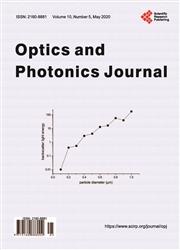The Size of a Photon
引用次数: 0
Abstract
This paper begins by exploring a useful and neglected detail of a photon—its physical size perpendicular to the direction of propagation in the same way as an atom or neutron has a physical size. Such a photon size would be quite separate from the cross-section of a photonic interaction, which depends on the material interacting. Such a perpendicular dimension of a photon will be invariant under Lorentz transform parallel to the light propagation direction and will thus be the same for all frequencies of light. This study also leads to new details about how a photon interacts, offering an explanation for the familiar physics where light slightly above and below the mean frequency of an excited state can still excite the same state without violation of conservation of energy—a mystery explored thoroughly in a previous paper without finding the solution offered here. As usual, a better elucidation of the details of light interaction also leads to new insights—especially about the vacuum field. The Appendix summarizes some previous research relevant to this discussion光子的大小
本文首先探讨了光子的一个有用但被忽视的细节——它的物理尺寸垂直于传播方向,就像原子或中子的物理尺寸一样。这样的光子大小将与光子相互作用的横截面完全不同,而光子相互作用取决于相互作用的材料。光子的这种垂直维度在平行于光传播方向的洛伦兹变换下是不变的,因此对于光的所有频率都是相同的。这项研究还揭示了光子如何相互作用的新细节,为人们熟悉的物理现象提供了解释,在这种物理现象中,略高于和低于激发态平均频率的光仍然可以在不违反能量守恒的情况下激发同一状态——这是一个谜,在之前的一篇论文中进行了彻底的探索,但没有找到这里提供的解决方案。和往常一样,更好地阐明光相互作用的细节也会带来新的见解,尤其是关于真空场的见解。附录总结了与本次讨论相关的一些先前研究
本文章由计算机程序翻译,如有差异,请以英文原文为准。
求助全文
约1分钟内获得全文
求助全文

 求助内容:
求助内容: 应助结果提醒方式:
应助结果提醒方式:


